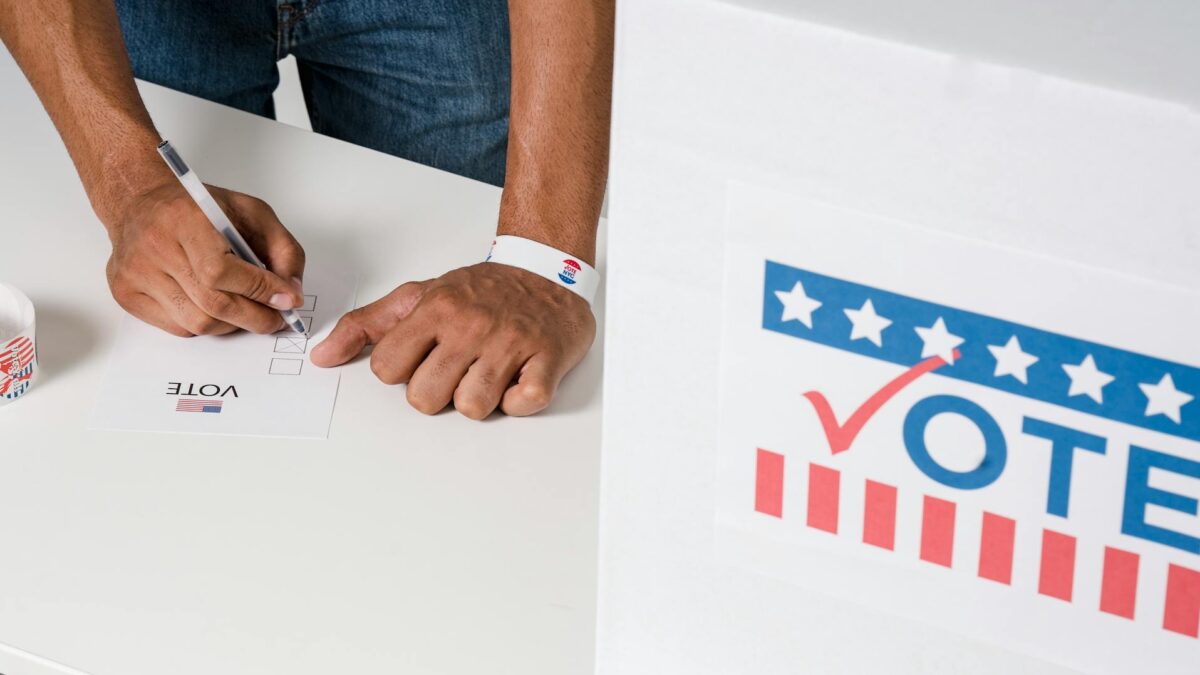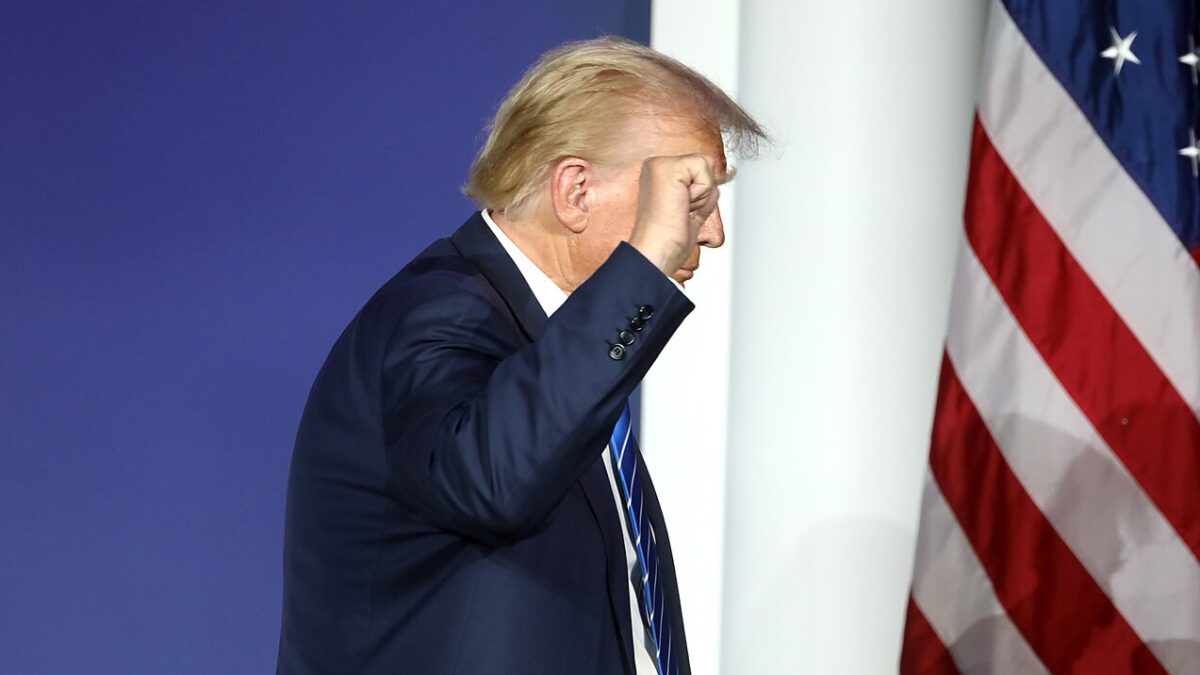
Recently, the U.S. Supreme Court heard oral argument in Lee v. Tam, a case about “cultural self-appropriation.” The Trademark Office had denied registration of a service mark to a rock band that call themselves The Slants. The denial was based on a statute that authorizes the government to reject marks that “may disparage persons, institutions, beliefs, or national symbols.”
Although many of us don’t care about trademarks or associate them with the First Amendment, the case encapsulates a broader conflict erupting a lot lately. It is that between our expressive freedoms and those claiming to use censorship to redress inequities of the past. Significantly, Tam grapples with this in its own way, providing a judicial perspective to that monopolized by progressives.
Focusing on and comparing it to a recent controversy over cultural insensitivity at the Whitney Museum in New York betrays the Left’s basic incapacity to process conflict. It shows this ineptitude stems not only from the Left’s disregard for, but also its confusion over, the rule of law.
‘What Business Does Congress Have Picking Out This One?’
Respondent Simon Shiao Tam, the leader of The Slants, whose members are Asian-American, has claimed a First Amendment right to brand his group with this pejorative slang term, historically used as an affront to Asian-Americans. Wearing the term proudly, the band says, neutralizes the authority and power of the name-callers.
True, sections of the Asian community might misunderstand and take offense. But, Tam argues, this should not abridge his and his band’s freedom to adopt what amounts to unpopular speech. Whether the applicant were Asian-American or not, he maintains, the statute should be deemed unconstitutional.
The government counters that the statutory purpose of trademarks is to identify manufacturers. When trademarks rile people unnecessarily, they distract from this purpose. Therefore, in this instance, Congress can determine that the harm objectionable marks cause “is the wrong kind of distraction,” and override the First Amendment.
Here, Justice Stephen Breyer chimes in. He points out that trademarks don’t just identify manufacturers, they advertise. Nowadays, they conjure images and create buzz and cause all manner of distraction. “[W]hat business does Congress have picking out this one, but letting all the other distractions exist?”
To step back: The “viewpoint-neutral” requirement for burdening speech that First Amendment jurisprudence imposes on government prohibits favoritism. Breyer is basically asking why judges and bureaucrats should get to reject The Slants’ mark because, to their (inevitably fallible) taste, the name might run afoul of the trademark disparagement statute, while to someone attuned to the subversions of appropriation, it does the opposite.
It will be important this summer to see where the high court comes out. But whatever its decision, we can be assured it will have rested on a reasoned process of deliberation, constrained by precedent. It will support itself with neutral criteria, not partisan values and beliefs or arbitrary pronouncements and “first truths.” Indeed, it is largely because of this that we respect judicial outcomes, even when they rankle. We defer to the rule of law.
The Left’s Only Moral Compass Is Victimhood
Contrast this with today’s Left, which has no fixed bearings, legal or otherwise. The crowd decides ad hoc which speech is to be gagged, whose unilateral, trend-driven definition of the privileges of victimhood imposed. Nowhere is this plainer than when cultural progressives confront perceived transgressions by one of their own. Witness the controversy over Dana Schutz’s painting in the current Whitney Biennial.
Now, artists pride themselves on publicly supporting uninhibited expression and experimentation. Those beliefs are hard to reconcile with authoritarianism and bullying, especially when a conservative is not around to scapegoat. Yet when the Whitney featured “Open Casket” (2016), a painting by a white woman artist appropriating a newspaper photograph from 1955 of the lynched African-American youth Emmett Till lying in his coffin, with a few exceptions, the art community behaved no better than a Berkeley mob.
Galvanized by British artist Hannah Black’s open letter to the Whitney (“The painting must go!”), they vilified both Schutz and the museum for culturally appropriating African-American history. They accused Schutz of misusing empathy to profit from racial oppression. Many echoed Black’s insistence the painting be destroyed. A group of “dissenters” circled the physical painting to block visitors from viewing it.
It is worth noting that many of the same people crying out for blood routinely line up to support artists like Richard Prince and Jeff Koons, who appropriate other people’s work in the name of creativity and expressive freedom. They are in many cases the same dues-paying members of organizations that actively oppose censorship in the arts and appear as amici curiae in litigation where wealthy, sticky-fingered appropriation artists cloak their takings in postmodern theory. This shouldn’t surprise anyone. Increasingly, the Left has lost interest in hiding its indifference to open discourse, except as an instrument for inciting aggression and enforcing groupthink.
Perhaps due to embarrassment over just how unmistakably totalitarian things on the cultural left have become, efforts at liberal damage control rapidly ensued. The New Yorker and the New York Times published articles highlighting Schutz’s good (if misguided) intentions. Art newspapers anguished over whether she had the right to produce such a painting, given her historical guilt as a white person and hard-wired racism. A quavering few mitigated their condemnation by offering abject quotes from Schutz, including her vow never to sell the artwork.
It is somewhat to the Whitney’s credit that they didn’t throw the painting onto the ascending flames of the American liberal bonfire.
Empathy by Central Committee
So, what, exactly, was Schutz’s crime, other than getting her work accepted into a highly competitive venue by professional curators whose job is to mediate between many constituencies? Certainly it wasn’t obvious to the visitors I spotted milling around the Whitney last Sunday who didn’t miss a beat as they passed the painting. Since initial reviews of the biennial widely praised it, art connoisseurs and experts were evidently also slow on the uptake.
Here’s the Whitney’s answer, via part of a wall label it added later:
Since the opening of the Biennial, this painting has been at the center of heated debate around questions of cultural appropriation, the ethics of representation, the political efficacy of painting, and the possibilities or limitations of empathy. The painting’s inclusion in the Biennial reflects on the ongoing fact of racialized violence in the United States, and stems from the curators’ belief that the Whitney, as a museum of American art, must engage this enduring history, and that art is critical to this conversation.
You might notice some perplexities left out of the “conversation.” Such as: Isn’t empathy ultimately tribal? Don’t we identify with those closest to and most like ourselves, and develop from there the capacity to care about injustice? Do not centuries of Renaissance painting teach us that suffering and redemption are universal human experiences?
Above all, is it possible to besiege and seduce people continually with images and stories of victims then regulate what they feel and whom they identify with? Society is continually sampling other cultures. The thought police would have no rest keeping our intimate responses in line. And oh, yes, where is that line, again?








